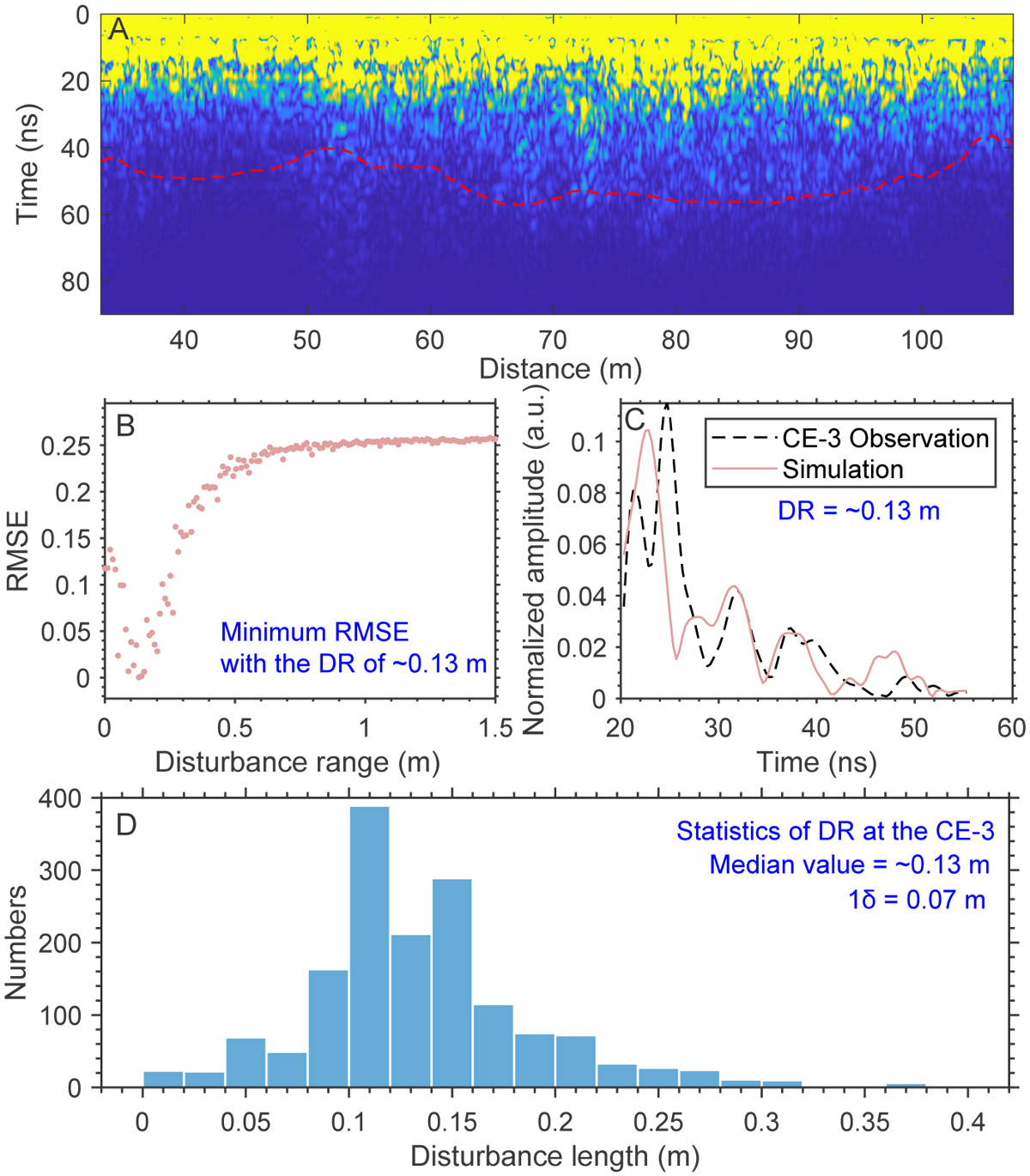Fig. 11

Download original image
Studying the heterogeneity of the lunar regolith at the Chang’E-3 landing site. In the model, the relative permittivity of the background medium was set to 3.23 with a standard deviation of ~60.1%, and the loss tangent was given to be 0.014. The setting of the physical properties is in line with those estimated by the radar observation (Ding et al. 2020c, d). (A) The high-frequency radargram of Chang’E-3 after the Hilbert transform. The red dashed lines show the interface between the upper lunar regolith and the underlying material (Xiao et al. 2015; Ding et al. 2020c). Our manual calculation of the dashed line is based on the amplitude of the interface reflection which has become sharply weaker, indicating the boundary of difference of materials. (B) RMSE values are a function of the disturbance range (DR) for the radar trace of 675. Both the radar observation and the simulation were normalized with their peak value of the surface reflection echo. (C) Comparison between the radar simulation and observation, where the disturbance range is ~0.13 m, and (D) the statistical result of the disturbance range.
Current usage metrics show cumulative count of Article Views (full-text article views including HTML views, PDF and ePub downloads, according to the available data) and Abstracts Views on Vision4Press platform.
Data correspond to usage on the plateform after 2015. The current usage metrics is available 48-96 hours after online publication and is updated daily on week days.
Initial download of the metrics may take a while.


